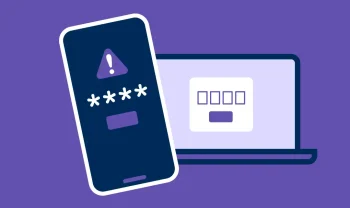Questionnaires form part of a survey which the user (known as a participant while taking the survey and a respondent once they have finished) completes by answering questions.
The questionnaire features questions and answer boxes, which allows participants to have their say on any given topic. ‘Questionnaire’ refers only to the question section that the respondent sees.
Although questionnaires may seem straight forward, there is usually a lot of work that goes on to ensure the questionnaire offers the best experience for the user.
Here’s our beginner’s guide to questionnaires.
Brought to you by Snap Surveys – market leaders in survey software and ready-to-run survey solutions since 1981.
Are questionnaire and survey the same?
A questionnaire isn’t the same as a survey – the questionnaire is the section of a survey that a user sees and responds to.
The survey itself includes the questionnaire, distribution, analysis, and reporting components, which are managed by an all-in-one survey platform.
Generally speaking, the questionnaire is simply the questions and the answer options. However, in some geographical regions these terms may be used interchangeably, such as in the US.
Questionnaire advantages and disadvantages
The advantages of a questionnaire outweigh the disadvantages because they give people the chance to have their say, allowing organisations to get feedback that gives them the chance to evaluate successes and areas for improvement.
One of the major advantages of a questionnaire (when used as part of a survey) is the ability to analyse that feedback and turn it into visual reports. By analysing the feedback collectively from multiple respondents, you can build up a picture of what you may be doing right and what you may be doing wrong. This enables you to make strategic changes and improve your product or services.
This survey data allows organisations and businesses to react and make necessary changes to improve their operations.
For example: a remote working survey may reveal that 92% of employees prefer remote working to office-based work – which the organisation may respond to by offering hybrid working. While a visitor attraction survey might reveal that only 30% of people enjoy the food on offer at the location. Due to this data, the organisation might consider changing its menu.
One of the disadvantages of a questionnaire is you might not always get the chance to follow up and find out more. One way around this is to ask for their contact information. You can also add open-ended questions to let respondents give additional feedback.
While we recommend inviting comments in an answer box at the end of a survey, it’s better for the majority of the survey to be more rigid and structured with closed-questions so that you can analyse the data more easily later.
However, when interviewing people in the field, face-to-face interviews do offer that opportunity to build rapport and ask more questions.
With our mobile interviewing app – Snap Offline Interviewer – you can conduct surveys with the same experience whether you are online or offline and record their answers verbatim. This gives you more information to work with at a later date.
How to design a questionnaire
To design a questionnaire for your survey, you need to start with a plan of what you hope to achieve. For example – evaluating how satisfied visitors are to your business. You should make this clear at the start of the survey so that people know why you are looking for their opinions, as this makes them more likely to respond honestly.
Next, consider how many questions it will take for you to get the information you require. See below for more information on that.
You should decide how best to reach your target audience:
- Will a survey sent by email or text message be enough?
- Will handing out paper surveys work best?
- Or maybe sending field interviewers out to meet people face-to-face will generate a better response rate?
It very much depends on the people you want to hear from and how you can connect with them most effectively.
Finally, don’t forget to make sure your questionnaire is accessible. In the US, 26% of the population has some form of disability (61 million people).
Accessibility does need to be taken seriously, as these people have a right to be heard. Remember that ensuring digital communications are accessible is a legal requirement in many countries.
Some of the ways you can achieve this are ensuring your questionnaire should offer subtitles/closed captions for people with hearing difficulties, audio for people with visual impairments, and make use of visual imagery (such as emojis) for people who may not fully understand the words in your survey.
Click for more information on web accessibility.
How many survey questions in a questionnaire?
The number of questions needed in your survey will depend entirely on the context.
For example, a face-to-face interview outside a supermarket about shoppers’ habits will need to be short and concise because people are on the move and don’t want to hang around for too long.
But a social housing survey for tenants or an employee engagement survey may well need to be longer to ensure the questions cover a range of topics.
Generally, you should limit the number of questions in your survey questionnaire as the more concise your questionnaire is, the more people are likely to respond.
Questionnaire bias in surveys – what it means and how to avoid it
Survey questions should be worded neutrally to avoid bias so that respondents aren’t being lead to giving a specific response.
For example, in a survey aimed at students, a biased question could be: “My school is one of the leading schools in the area.”
This is a leading question.
A neutrally worded way to ask this would be: “Please rank these local schools in terms of performance.”
Are questionnaires quantitative or qualitative?
There are two types of survey questions – quantitative and qualitative.
Quantitative questions can be counted or measured, which is achieved by asking a closed question such as multiple choice. When you ask these kinds of questions (such as “do you agree or disagree that you are satisfied with your housing landlord”) you can analyse that data easily because you will get statistics such as “84% of tenants agree that they are satisfied with their housing landlord”.
Qualitative questions offer the reasoning behind the quantitative data – i.e. the explanation for why a certain response was given.
This is achieved with open-ended questions that allow the respondent to speak freely and explain their views. It’s harder to analyse and measure this data but it is crucial for providing organisations with context and an understanding of their feedback.
When designing your survey’s questionnaire, using both methods in combination (where appropriate) can help you to achieve clearer insights.
Where to create a questionnaire
Create questionnaires and surveys in Snap XMP – the perfect survey platform for any organisation looking to get feedback and turn data into insights.
- Questionnaire design and distribution
- Analysis and reporting
- Quick-start templates
- 100% data security
- Online surveys, offline mode, and paper surveys
Trusted by UK government organisations, large corporations, small businesses, and market researchers.
Questionnaire for surveys FAQ
Questionnaire or interview?
A questionnaire is a series of questions and answer options/boxes that people complete when giving feedback, which can be carried out online or via paper. It is the part of a survey that is seen by a respondent. An interview is when feedback is given face-to-face to a field interviewer, such as in the street or at an event.
Questionnaire vs survey
Questionnaires are part of a survey. When you fill in a questionnaire, the answers are submitted for analysis. The overall process is what represents a survey. The questionnaire is just the questions and answers section that a respondent sees.
Questionnaire vs focus group
Questionnaires and focus groups are two ways to get feedback. Questionnaires are part of a survey, which people can fill in online via smartphone, laptop, tablet, or kiosk. Focus groups are hosted presentations and conversations where a group of individuals is invited by an organisation to have their say on something – such as ideas for a TV show, a product demonstration, or ways to improve transport services in an area. Usually, people in focus groups give their feedback verbally and the convenor of the focus group records it or makes notes.
Questionnaire limitations
One limitation of a questionnaire is that it doesn’t offer the chance for two-way conversation. However, there are ways around this, depending on the survey software you use and how you design the questionnaire. If you don’t include qualitative survey methods, you don’t get a chance to see the respondent’s own words to explain their answers. Open-ended questions give respondents the chance to offer their comments during surveys. The survey can then ask follow-up questions based on answers that are given, offering you the chance to probe deeper into certain topics. If you are conducting offline interviews in the field, our interviewing app Snap Offline Interviewer lets you record the spoken answers verbatim so that you can listen back later. This can offer valuable information that you might not have got otherwise.
Questionnaire online
Questionnaires online can be created in survey software and distributed through that platform by email or text message. The benefit of online surveys is they are faster to create, faster to distribute and collect results, and faster to analyse.
Get a free trial of our online questionnaire and survey maker Snap XMP today.


